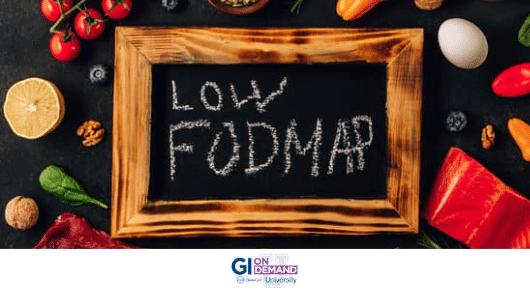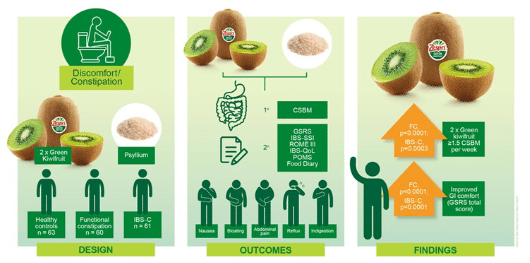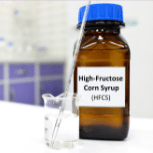The Joy of Low FODMAP Label Reading
Reading food labels checking for FODMAP ingredients is not for the timid. You might benefit by getting a PhD in food science prior to taking the plunge. Ha! I am hoping today’s post will provide a few tips to make this sometimes tedious job, well, less tedious. Don’t worry, you will soon get the hang of it!
Here are some guidelines to get your brain thinking like a FODMAP expert:
Tip #1: Eat more foods that don’t come with labels. Fresh low FODMAP fruits and veggies, eggs, fresh meats–no label–no problem.
Tip#2: Select items with only recognizable ingredients. What the heck is carboxymethylcellulose, anyway? (It’s actually an emulsifier used commonly in the food industry associated with altering gut microbes and linked with inflammation!) Ugh.
Tip#3: When in doubt, do without. At least in the beginning phase of the low FODMAP elimination diet. You will want to be sure you are not inadvertently adding FODMAPs during the early stages. The initial goals of the low FODMAP diet are to help you feel better and to learn if you are FODMAP sensitive or not. About 25-30 percent of people with IBS are NOT sensitive to FODMAPs.
Tip #4: Read a great post from the Monash Team about FODMAP label reading, detailing tips on where you just might find lurking FODMAPs.
Tip #5: Ingredients are listed in order of weight. So traces of a FODMAP ingredients, listed last in the list of ingredients, might not cause a problem. Trying small amounts of an item with traces of a source of FODMAPs to see how your body reacts, might be worth it. (Hold off testing these types of food products in the first week of the diet as you want to do the diet as compliantly as possible to learn how your body reacts.)
Let’s take a peek at some food labels to learn a bit more…
Many of my clients assume that if a product is gluten free it is also low FODMAP. That is not always the case. The item below is a gluten free multigrain cereal.
Note the FODMAP ingredient with the arrow pointing to it!
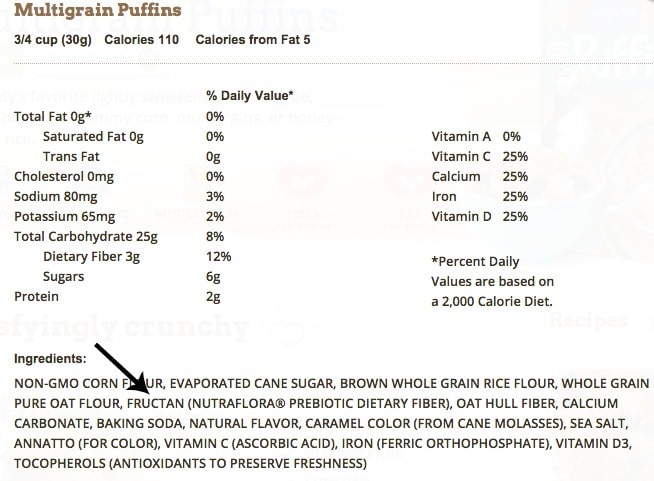
Fructan, a prebiotic fiber…..that would be a FODMAP source.
The oat hull fiber in the above product is mostly insoluble fiber so should be low FODMAP (FODMAP containing fibers aresoluble fibers.)
Just a word about fructans… for the 80-85% of the world that does NOT suffer from IBS, fructans are often well tolerated…and super healthy! Fructans are linked with many health benefits including:
- Reducing the growth of potential pathogens in the colon
- Increased stool bulking capacity, helping prevent constipation
- Increased calcium absorption
- Maintenance of the integrity of the gut mucosal barrier and increased colonic mucus production
- Stimulation of the gastrointestinal immune system and reducing the risk of colorectal cancer
But for individuals with IBS, fructans can lead to tummy trouble: bloating and gas. While you undergo your low FODMAP elimination diet, stay clear of fructans. When you do the re-introduction or challenge phase of the diet, hopefully, you will learn you can tolerate adding some back into your diet.
Other sources of fructans you may find on a food label include: onion, garlic, wheat, and chicory root extract (inulin), to name a few. In products regulated by USDA, such as meat and poultry broths: onion and garlic may be hidden, listed as ‘natural flavors’ in the US.
Next up… is a lactose free coconut yogurt. You might assume if a yogurt is lactose free it would be low FODMAP. Nope. That is not always the case.
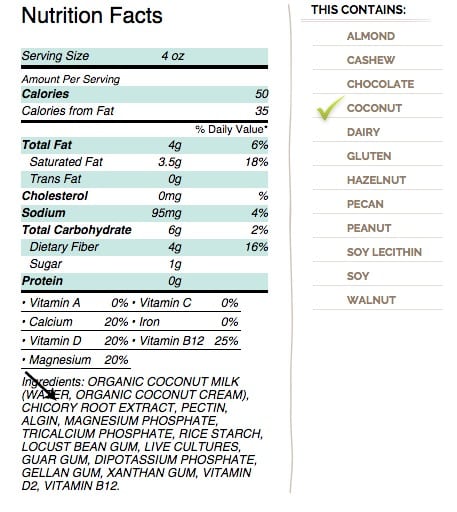
And the lurking FODMAP in the label above is chicory root, another fructan.
This product also has pectin and numerous gums. These ingredients are NOT FODMAPs. Gums and pectin are made up of longer chain carbohydrates compared to the small chains of carbohydrates in FODMAPs. But pectin and gums are rapidly fermentable –so if you eat too much at a sitting, these gums & pectin can lead to gas and bloating. It’s all about portion…just don’t overdo them!
For those new to the low FODMAP diet, I recommend you print out my free grocery list and download the Monash University low FODMAP diet app to guide you on your initial trip to the market. Two good sites to use to check ingredients of brandname foods are shopwell.com and Hannaford.com. It’s nice to scan a few products ingredients before you get to the store to help streamline the shopping process. Do remember, manufacturers can change ingredients in their products at any time, so ALWAYs re-check ingredients before you toss the food in your cart.
And most importantly, try not to stress too much over every bite you take…just do the best you can! Working with a dietitian can absolutely make the low FODMAP diet much easier…and likely healthier too! Here is my list of FODMAP savvy dietitians.
And last but not least…the winner of the 88 Acres dark chocolate & sea salt give-a-way is Maddie…an email has been sent to notify the winner! Enjoy these yummy bars!
And finally, there was a paper published yesterday online in Gut, showing that the low FODMAP diet lowers histamine levels. Metabolic profiling of urine showed groups of patients with IBS differed significantly after the low FODMAP diet compared to those on a high FODMAP diet. Histamine, a measure of immune activation, was reduced eightfold in the low FODMAP diet group. The low FODMAP diet increased Actinobacteria richness and diversity, and high FODMAP diet decreased the relative abundance of bacteria involved in gas consumption (no surprise on this last part!) This is yet another emerging connection on how the low FODMAP diet offers symptom management in patients with IBS.
Kate Scarlata is a Boston-based registered and licensed dietitian as well as a New York Times Best Selling author with 25+ years of experience. Kate specializes in the low FODMAP diet and digestive health conditions including: IBS, celiac disease, inflammatory bowel disease, and small intestinal bacterial overgrowth (SIBO) in her private practice in Medway, Massachusetts. This post first appeared on her blog.
Listen to our
latest Podcast!


